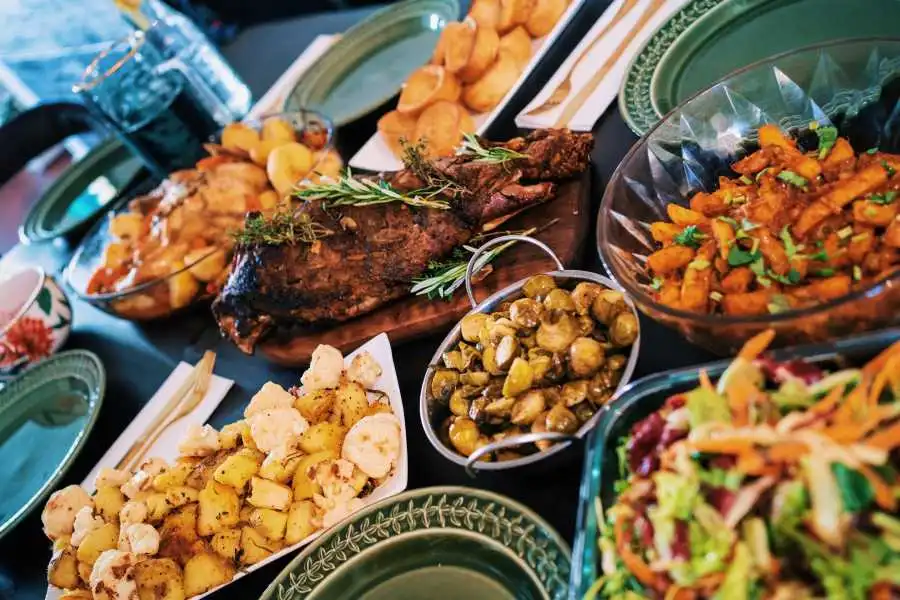Exploring the Tradition of Funeral Repasts
In the tapestry of human culture, the practices surrounding death and mourning are as diverse as they are universal. Among these, the funeral repast stands out as a poignant amalgamation of grief, celebration, and community support. A funeral repast, or the meal shared among family, friends, and mourners after a funeral service, serves not only as a means to offer comfort and sustenance but also as a ritual that honors the deceased. This tradition, steeped in history and varying significantly across cultures, underscores the importance of communal bonds in the face of loss. This article delves into the origins, cultural variations, and significance of the funeral repast, offering insights into its enduring relevance.
The Origin of Funeral Repasts
The roots of funeral repasts can be traced back to ancient civilizations, where feasts were often held to honor the dead and support the living through their grief. These gatherings were not merely about the consumption of food but were imbued with symbolic meanings. For example, in Ancient Egypt, feasts were held to ensure the deceased’s safe passage to the afterlife, featuring foods that were believed to be favored by the gods. Similarly, in Norse culture, the funeral feast, or “erfilogi,” was an essential part of the burial rites, symbolizing the deceased’s journey to Valhalla. This section will explore these ancient practices in detail, drawing connections to the modern funeral repast and highlighting the enduring nature of this tradition. You Can Also Read This The Truth About Tilapia: Why It’s Not as Good as You Think
Cultural Variations of the Repast
Western Practices
In the West, the funeral repast often reflects personal choice and family tradition. Whether it’s a simple gathering at home with close family or a large reception, the emphasis is on coming together to share memories and support one another. The choice of food, venue, and format can vary widely, demonstrating the individualized nature of mourning and remembrance.
Eastern Traditions
In many Eastern cultures, the repast is deeply ritualistic, with specific foods and ceremonies that pay homage to the deceased and the ancestors. For instance, in Japan, the “koden” ceremony involves offering food to the spirit of the deceased, a practice rooted in Buddhist and Shinto traditions. This reflects a more communal and ritualized approach to mourning, emphasizing the continuity of life and the spiritual journey of the deceased.
Other Cultural Perspectives
This section will further explore unique practices from other regions, such as the Middle Eastern “wake,” the South Asian “shraddha,” and the African American “repast,” highlighting the rich diversity in how different cultures commemorate the dead.
The Significance of Sharing a Meal
Sharing a meal in the aftermath of a funeral transcends the act of eating. It symbolizes the community’s solidarity, the sharing of burdens, and the celebration of the life lived. Psychologically, it provides a sense of normalcy and comfort during a time of upheaval. Socially, it reinforces the bonds among the bereaved, offering a space for shared grief and mutual support. This section will delve into these aspects, drawing on psychological theories and social customs to elucidate the deep-rooted significance of the funeral repast.
Planning a Repast Funeral
Organizing a repast involves logistical considerations and personal touches. This section would offer practical advice on planning, including venue selection, menu planning, and incorporating traditions that honor the deceased. It would also address modern considerations, such as digital invitations and live streaming for those who cannot attend in person. Tips on how to make the repast a reflective and inclusive event would be provided, emphasizing the importance of catering to diverse dietary needs and personal preferences.
Personal Stories and Testimonies
Integrating personal stories from individuals who have organized or attended repasts can provide valuable insights into the varied experiences and the comfort found in the tradition. This section would feature interviews or anecdotes, highlighting the personal and communal aspects of repasts. Stories could range from a family’s decision to hold a potluck-style gathering that reflected the deceased’s love of communal cooking, to a formal reception that brought together distant relatives and friends, fostering a sense of unity and shared memory.
Conclusion
The funeral repast embodies the complex interplay of grief, tradition, and community. Across cultures and through the ages, it has served as a poignant reminder of the resilience of the human spirit in the face of loss. By gathering to share a meal, individuals not only honor the memory of the departed but also reaffirm the bonds that connect the living. As society continues to evolve, the funeral repast remains a testament to the enduring need for connection and support during life’s most challenging moments.














Post Comment